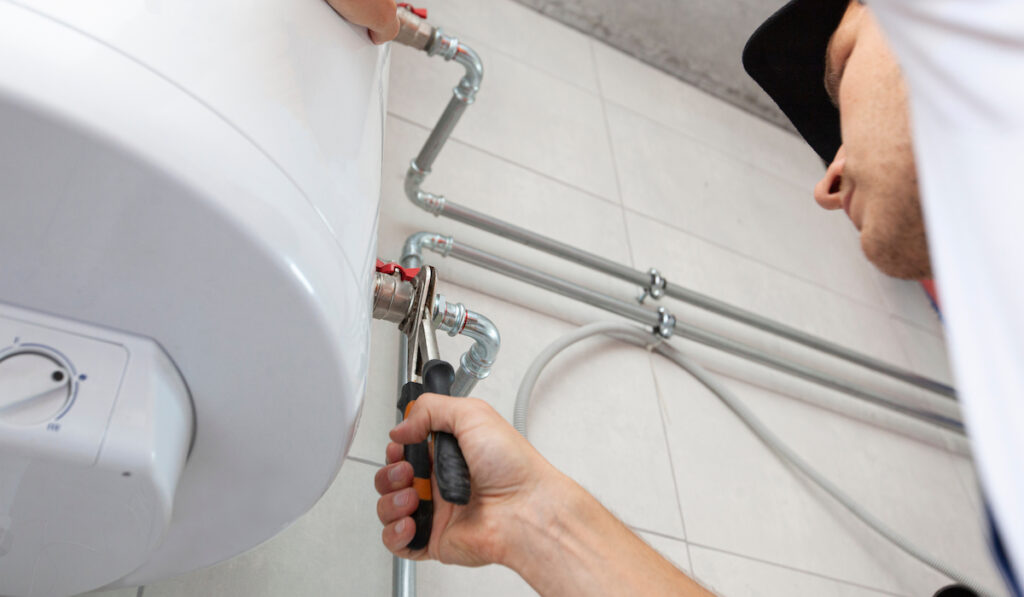What are your thoughts about Tips on Maintaining a Water Heater?

Warm water is vital for day-to-day convenience, whether it's for a refreshing shower or cleaning recipes. To ensure your warm water system runs efficiently and lasts longer, normal maintenance is essential. This post gives useful ideas and understandings on how to preserve your home's warm water system to avoid interruptions and pricey fixings.
Introduction
Maintaining your home's warm water system could seem difficult, yet with a couple of easy actions, you can guarantee it runs smoothly for many years to find. This overview covers everything from understanding your hot water system to do it yourself upkeep tips and knowing when to employ specialist aid.
Importance of Preserving Your Warm Water System
Normal upkeep not just extends the lifespan of your hot water system however likewise guarantees it runs successfully. Neglecting upkeep can bring about decreased efficiency, higher energy expenses, and even premature failing of the system.
Indications Your Warm Water System Demands Upkeep
Recognizing when your warm water system requires focus can prevent significant concerns. Keep an eye out for indicators such as inconsistent water temperature, odd sounds from the heating unit, or rusty water.
Flushing the Water Heater
Flushing your water heater removes sediment buildup, improving efficiency and prolonging its life.
Checking and Replacing Anode Rods
Anode rods avoid rust inside the tank. Examining and replacing them when worn out is critical.
Facility Concerns Needing Professional Help
Examples consist of significant leakages, electrical problems, or if your water heater is consistently underperforming.
Regular Expert Maintenance Advantages
Specialist upkeep can include thorough inspections, tune-ups, and making certain compliance with safety standards.
Checking and Changing Temperature Setups
Readjusting the temperature level settings ensures optimum performance and safety.
Do It Yourself Tips for Maintenance
You can perform numerous upkeep tasks yourself to maintain your warm water system in top problem.
Looking for Leaks
Regularly evaluate pipes and connections for leakages, as these can result in water damages and higher bills.
Recognizing Your Hot Water System
Before diving right into maintenance jobs, it's practical to comprehend the standard elements of your hot water system. Usually, this includes the hot water heater itself, pipes, anode poles, and temperature level controls.
Monthly Upkeep Tasks
Routine month-to-month checks can assist capture minor concerns before they intensify.
Testing Pressure Relief Valves
Checking the pressure safety valve guarantees it works appropriately and avoids excessive pressure build-up.
Insulating Pipelines
Insulating warm water pipes lowers heat loss and can save power.
When to Call an Expert
While do it yourself maintenance is valuable, some problems need professional competence.
Conclusion
Regular upkeep of your home's hot water system is necessary for efficiency, longevity, and expense financial savings. By following these ideas and recognizing when to seek expert aid, you can guarantee a trustworthy supply of warm water without unexpected interruptions.
Water Heater Maintenance Tips
Test the TPR Valve
Shut off the power and the cold-water supply valve. Place a bucket under the pipe connected to the temperature-pressure-release (TPR) valve on the top or side of the tank. (This valve opens if the tank pressure gets too high.) Lift the valve’s tab to let some water out, then let go. If water keeps flowing, drain the tank partway, unscrew the old valve with a pipe wrench, and install a new one. Check the Anode Rod
Put a hose to the tank’s drain cock and let out a few gallons of water. Now fit a 1 1/16-inch socket onto the rod’s hex head on top of the heater (or under its top plate) and unscrew the rod. If it’s less than ½ inch thick or coated with calcium, buy a new one, wrap its threads with Teflon tape, put it back in the tank, and tighten securely. Use this segmented rod if headroom above the tank is limited. Drain the Tank and Wash Out Sediment
Drain the remaining water in the tank into the bucket, then stir up the sediment on the tank’s bottom by briefly opening the cold-water supply valve. Drain and repeat until clean water comes out of the hose. Close the drain cock, refill the tank, and turn its power back on. Adjust the Temperature
Find the temperature dial on the side of the tank and unscrew its cover. Adjust the dial to 120 degrees using a flathead screwdriver. For every 10 degrees the temperature is lowered, you can expect to save up to 5 percent in energy costs. Turn the water heater off or the thermostat down to its lowest setting if you plan to be away from home for more than three days. Insulate the Pipes
Buy some self-sticking 3/8-inch-thick foam pipe insulation that matches the pipes’ diameter. Slide the foam over the hot-and cold-water pipes as far as you can reach. Insulating the cold-water pipe prevents condensation in summer. Peel the tape and squeeze the insulation closed. If the pipe is 6 inches or less from the flue, cover it with 1-inch-thick unfaced fiberglass pipe wrap. https://www.thisoldhouse.com/plumbing/21016402/how-to-maintain-a-water-heater

As a person who reads on What Kind of Maintenance Do Water Heaters Need?, I think sharing that piece of content was essential. Sharing is good. You won't know, you may very well be doing someone a favor. We enjoy reading our article about Tips For Maintaining Your Hot Water Heater.
Get Started